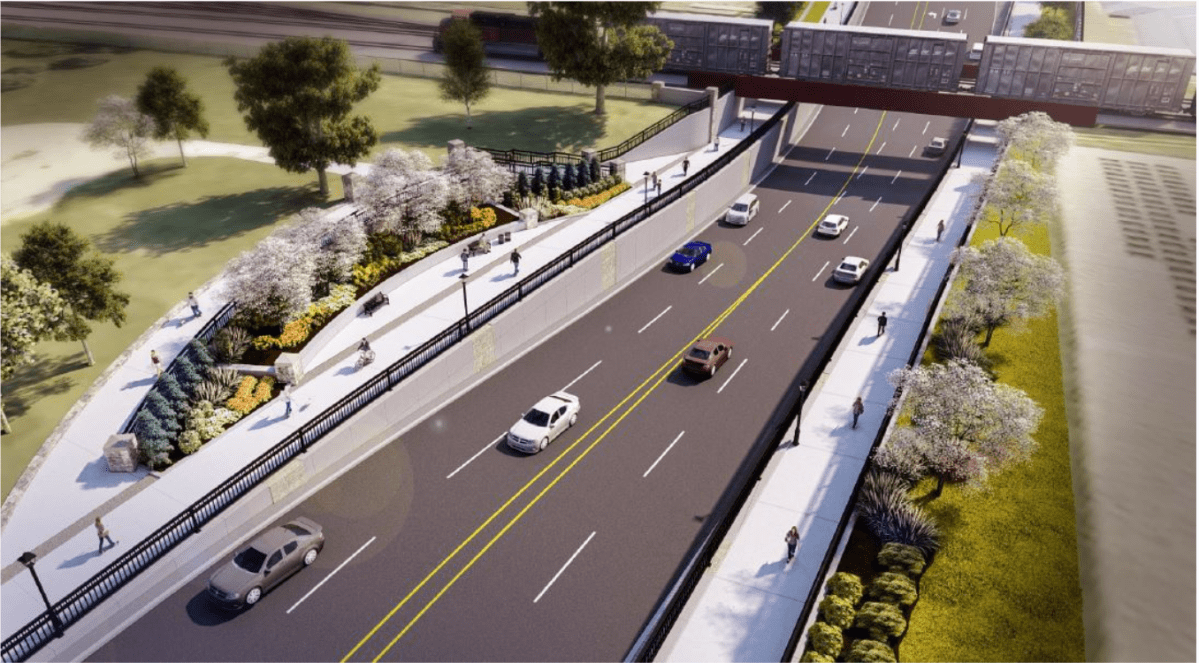As the snow begins to finally melt away, London, Ont.’s, 2023 construction season is shaping up to be the busiest in the city’s history.

With more projects planned than any other year valuing a total of just over $200 million, the city says the major projects are vital to help support the fast-growing population.
“These projects are key to supporting our growing population, making sure London is sustainable and ready for the future, and making it safer for people to get around — no matter how they travel,” said Jennie Dann, director of construction and infrastructure services.
The $200 million cost is more than the city has spent in any other year for road construction, up from last’s record of around $190 million. The city plans to reconstruct 80 km of roadway, add or replace 20 km of sanitary and storm sewers, rebuild 12 km of water main and construct 25 intersections.
As part of a report going to the Civic Works Committee next week, the city outlined the top 10 construction projects scheduled for 2023. They are:

Get daily National news
- Adelaide Street North Underpass
- Downtown Loop phase two
- Wellington Gateway phase one
- East London Link phase two
- Victoria Bridge replacement
- Mud Creek phase two
- Fanshawe Park Road and Richmond Street intersection improvements
- Southdale and Colonel Talbot roundabout
- Quebec Street infrastructure renewal
- Dingman Drive improvements
Dann says the Adelaide underpass project, which commenced last year, is now entering a significant phase with lots of excavation. This follows the work done last year to adjust the roadway into a curve around the excavation site and install temporary rail crossings.
“Into next year, we’ve got a lot of work to put things back together. We’ll have to repair McMahen Park and all those areas where we have that temporary road,” said Dann. “Everything should all be put together by middle of 2024.”
Dann says the Southdale and Colonel Talbot roundabout, which should commence in the spring with carry-over work in the fall and spring of 2024, offers improved mobility and safety for all road users.
“One of the things a roundabout can do is it really takes the number of T-bone and head-on collisions to zero,” said Dann.
“We’re trying to avoid the types of accidents that actually cause fatalities. (A roundabout) takes that right down to nothing, on top of moving traffic a lot faster.”
Along with the roadway construction, 16 km of new bike lanes and 14 km of new sidewalks will be added. Twenty-six km of existing sidewalk will be replaced.
During construction projects, the city says contractors are asked to maintain clearly labelled pedestrian maps and signage and have a temporary surface to walk over when necessary.
While city staff say the use of the multi-year budget by council is a significant benefit for planning projects years in advance, there are still many issues that can arise, causing possible delays or budget issues. The report to the committee lists material costs, supply chain interruptions and labour shortages as potential issues that could be encountered.
Still, Dann says the city is using several mitigating solutions and contingencies to prevent budget and time overruns.
“Sometimes that’s using tools like having multiple crews working in different parts of the (same) job,” said Dann, adding there was an instance last year where one project in the downtown core was worked on for 24 hours a day for short periods of time.
A full run down with information on each project can be found at www.london.ca/roadconstruction.










Comments